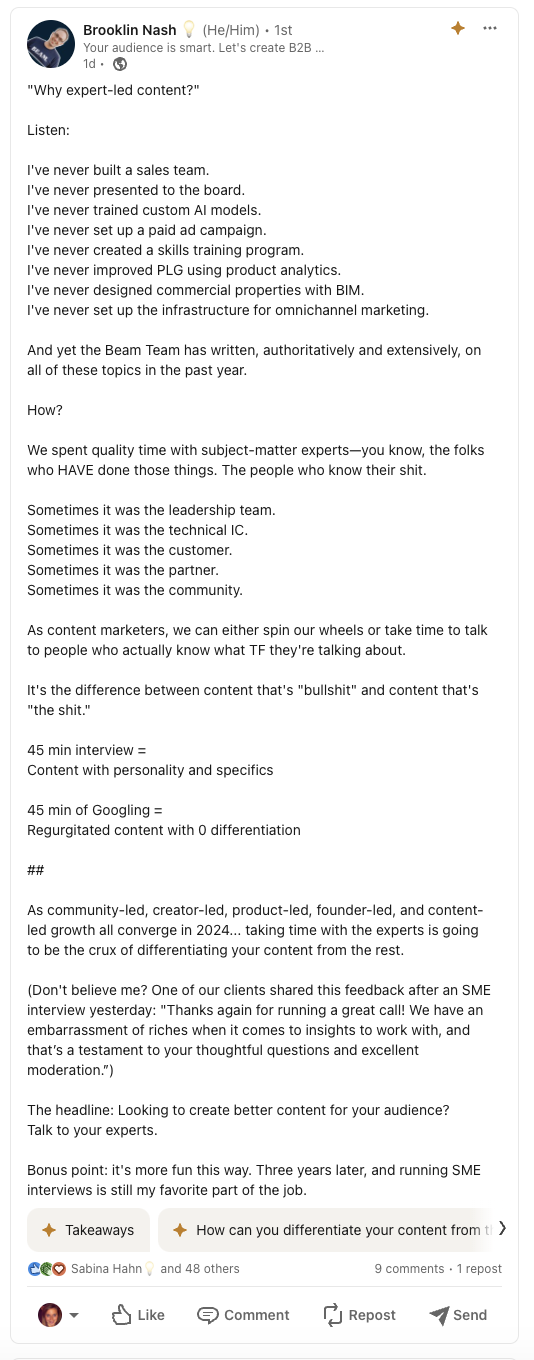What to know about Google’s search updates
Last updated: June 7, 2024

This week, Google released an update to its search algorithm aimed at removing low-quality, unhelpful content from results and making searches as helpful as possible.
With these changes, Google’s search algorithm will penalize content from websites that are unhelpful, have a poor user experience “or feel like they were created for search engines instead of people. This could include sites created primarily to match very specific search queries.”
Google also said that producing content at scale to boost rankings is a violation of its guidelines.
Streamline your tech stack: Boost efficiency, unify data & retain talent! Get expert tips now:
From its guidelines: “Today, scaled content creation methods are more sophisticated, and whether content is created purely through automation isn’t always as clear. To better address these techniques, we’re strengthening our policy to focus on this abusive behavior — producing content at scale to boost search ranking — whether automation, humans or a combination are involved. This will allow us to take action on more types of content with little to no value created at scale, like pages that pretend to have answers to popular searches but fail to deliver helpful content.”
To be clear, Google’s search rankings are based on a combination of variables including on-page UX, backlinking practices and the user’s location. But relevance and quality are two of the most important factors in Google’s algorithm — and publishers who fall short of Google’s new standards are likely to see their search rankings and website traffic suffer as a result.
So what does this mean for your content strategy? If you’re already making a good-faith effort to serve your audience with relevant content, you should be in good shape.
But we can all stand to take stock of our strategy from time to time. In the wake of these updates, it’s worth considering how you can ensure your content’s as relevant, accurate and helpful as possible. That’s where we come in: Create content that connects with your audience — and reduce your reliance on search rankings — with these tips from our team
Double down on your first-party data
First-party data — data sourced directly from your audience — is the foundation of an audience-first content strategy. The more first-party data you have, the more relevant and engaging each article will be for your audience. And the better you are at engaging your core audience, the less you need to rely on new website traffic to drive ad revenue and results.
But many media companies struggle to get enough insights about their audience. Or if they do have the information, data silos keep them from acting on it quickly enough to make an impact.
Learn how to use your first-party data to please your audience and drive sustainable website traffic with these best practices:
- Convert your anonymous visitors to known audience members via a registration wall: Sure, you need a strong connection with your audience. But how can you spark that connection if you don’t know who your website audience is — or what they care about? Learn more about your audience — and get the information you need to improve their experience — with a registration wall. Registration walls, aka “regwalls,” are “free” paywalls that prompt someone to create a free account on your website before they can read any additional content. When they’re done well, they can generate the information you need to personalize content to individual users while still allowing your audience to access your content. Just getting started with regwalls? Learn how to create regwalls that drive more traffic and engagement here.
- Build your audience profiles with progressive profiling. Don’t have enough data about your audience? Change the required fields on each of your lead forms so that you collect progressively more information about someone every time that they engage with you (a strategy called progressive profiling). This way, you can get a richer picture of someone’s interests and needs without annoying them with long forms.
- Gamify data collection for incremental signups. Create more polls, quizzes and games so you can collect more first-party data from your audience while keeping them actively engaged and giving them more value for their participation.
- Consider a CDP specifically for media. Often, the problem isn’t having enough data. It’s getting data from all your channels — from email and website to social and ads — in one place, then standardizing, cleaning, and transferring it quickly enough to use in real time. If that sounds a little too familiar, consider using a CDP specifically for media.
These tools aggregate audience data from every touchpoint and consolidate it in one database via nightly API drops and other automated workflows. Along the way, the data is standardized and cleared of duplicates, so each person’s profile is as current and complete as possible. The end result: In one search, media teams get the best view of everyone in their audience. So they can see exactly how to serve each one — rather than resorting to spraying and praying via AI-generated articles and hoping something hits.
Compete on your expertise
ChatGPT can spit out thousands of words per minute. But it can’t compete with the kind of stories, mistakes, and “do as I say, not as I do” cautionary tales that come from decades of experience. And that’s where you can shine.
But don’t take our word for it: Brooklin Nash, the co-founder and CEO of Beam Content, made the case for expert-led content a lot better than we can. We’ll let him take it from here:

Need to grow your expert network? Here’s where to start:
- Encourage your senior leaders to participate in industry events. This can range from networking on the event floor to speaking at a panel or session. The key is to get them speaking about tangible experiences they’ve faced and overcome in their roles. Encourage them to move beyond buzzwords and share something their audience can replicate. This way, you’ll naturally attract new partners and co-creation opportunities without relying as heavily on cold outreach.
- If you’re just getting started, look in the top-voted comments of popular LinkedIn posts and comments for potential sources. This will help find people that have battle-tested industry experience, but more availability than top industry influencers.
- Co-host podcasts and interviews with industry leaders in your industry. Or consider sponsoring some of their newsletters, podcasts or event speaking engagements to sweeten the pot.
Extend the reach of your content with a repurposing checklist
Google’s updates might fix its search results. But low-effort listicles and AI-generated articles are just symptoms of a broader problem, one that Google can’t solve with some new rules: Media companies need to reach people on more channels than ever, but they’ve got less time, resources and manpower to do it than ever.
Repurposing content across channels helps you extend the ROI of your content — and reach your audience across more channels. But you’re on a perpetually short-staffed, overstretched team, repurposing’s often easier said than done. Because once you’ve produced a great podcast episode or research report on your own, you’re probably too busy on your next project to remember to repurpose your old content everywhere.
So establish a standard operating procedure (SOP) for repurposing the insights it generates. Systemizing your repurposing plan ensures you’re spreading your message across every channel in a timely fashion. For example, here’s what we did after our annual conference for media industry professionals:
- Immediately after the event, send follow-up email to attendees and link to a landing page with any exclusive content, assets, and discounts.
- Obtain video of sessions from the video team or outside agency, then create a landing page with the full video, or key recaps, of each session.
- Synthesize points from the event in an article and/or press release.
- Create blog posts or case studies from each of your event’s main sessions. Once you’ve got these assets in place, include these articles in a special event-specific newsletter.
- Create graphics with key pull quotes from your event, then share across social media.
- Create infographics summarizing key research from your event, then share on social media.
Ideally, you’ll set this process in motion well before your premium content launches so your team’s ready to launch these assets as quickly as possible. Repeat for 2-3 pieces per quarter and before long, you’ll be able to keep up a consistent posting cadence without sacrificing content quality.
Once you’ve got that down, you can step off the hamster wheel of constant content creation — and focus on creating higher-quality content your audience (and the Google algorithm!) enjoys.
Subscribe to our newsletter
Sign up to get our latest articles sent directly to your inbox.
What you should do now
- Schedule a Demo to see how Omeda can help your team.
- Read more Marketing Technology articles in our blog.
- If you know someone who’d enjoy this article, share it with them via Facebook, Twitter, LinkedIn, or email.